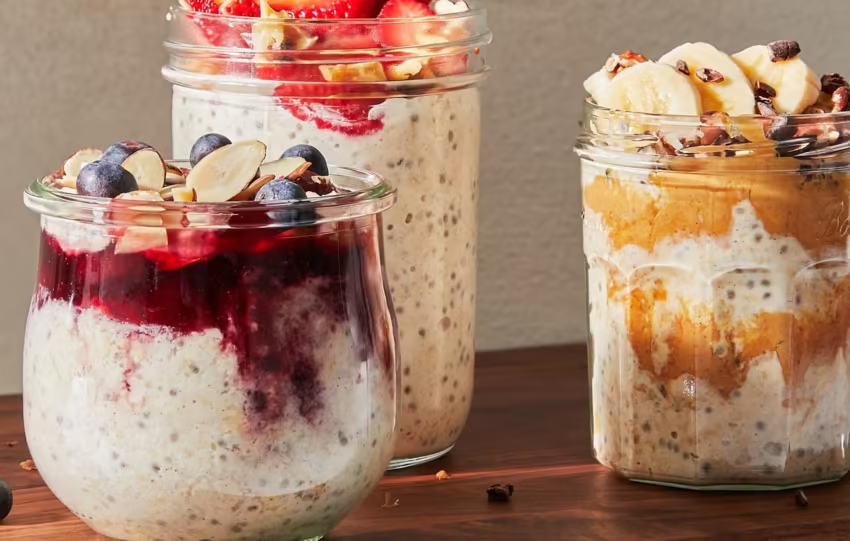Share This Article
Maintaining a balanced diet for families is essential to ensure everyone stays healthy and energized. With a mix of nutritious ingredients, strategic meal planning, and mindful eating, families can build habits that support overall well-being. This guide provides practical tips for creating healthy eating for families, along with family nutrition guide strategies and balanced diet tips for every household.

Why a Balanced Diet is Crucial for Families
A balanced diet for families includes all the essential food groups in the right proportions. It provides energy, supports growth, and helps prevent chronic diseases. Whether it’s ensuring that children get the nutrients needed for growth or adults maintain their health, adopting healthy family meals is the cornerstone of family wellness.
Essential Food Groups for a Balanced Diet
A family nutrition guide wouldn’t be complete without mentioning the five key food groups:
- Fruits and Vegetables
Rich in vitamins, minerals, and fiber, fruits and vegetables are the foundation of a healthy diet. Aim to fill half your plate with colorful produce for every meal. - Whole Grains
Foods like brown rice, whole wheat bread, and oats provide energy and keep you full longer. They’re also packed with B vitamins and fiber. - Proteins
Lean meats, beans, tofu, and eggs are excellent sources of protein. Include a mix of plant and animal proteins in your family’s meals. - Dairy or Dairy Alternatives
Milk, yogurt, and cheese (or fortified plant-based options) are vital for calcium and vitamin D, supporting bone health. - Healthy Fats
Avocados, nuts, seeds, and olive oil provide essential fatty acids and support brain function and hormone regulation.
Family Meal Planning for Balanced Diets
Family meal planning for balanced diets is a game-changer. Here’s how you can organize your meals effectively:
- Plan Ahead
Set aside time weekly to create a meal plan. Include options for breakfast, lunch, dinner, and snacks that align with your family’s nutritional needs. - Prep Ingredients
Wash, chop, and store ingredients in advance. This makes cooking quick and stress-free. - Involve Everyone
Get the whole family involved in choosing recipes and preparing meals. This not only makes meal prep fun but also encourages kids to try new foods.
Tips for Balanced Meals
Follow these balanced diet tips to ensure your family gets all the nutrients they need:
- Make Every Plate Colorful: A colorful plate usually means a variety of nutrients.
- Practice Portion Control: Serve appropriate portions to avoid overeating.
- Limit Processed Foods: Choose fresh, whole foods over packaged snacks.
- Stay Hydrated: Encourage water as the primary beverage.
Healthy Eating Habits for Kids and Adults
Building healthy eating habits for kids and adults is key to long-term wellness. Here are some tips:
- Set a Positive Example
Children often mimic adults’ behaviors. Show them the importance of choosing healthy foods. - Create a Routine
Establish regular meal and snack times to promote consistent energy levels and prevent overeating. - Encourage Mindful Eating
Teach your family to eat slowly, savor each bite, and recognize feelings of hunger and fullness.
Family-Friendly Healthy Recipes
Preparing delicious and nutritious meals doesn’t have to be complicated. Here are some ideas for family-friendly healthy recipes:
- Vegetable Stir-Fry with Quinoa
A quick and colorful dish packed with fiber and protein. - Grilled Chicken and Veggie Wraps
Perfect for busy weeknights, these wraps are easy to assemble and full of flavor. - Berry and Yogurt Parfaits
A healthy dessert or snack option loaded with antioxidants and calcium. - Whole Wheat Pasta with Tomato and Basil
A kid-friendly meal that sneaks in plenty of veggies.
Overcoming Challenges in Healthy Eating
Sticking to a balanced diet can be challenging, especially with picky eaters or busy schedules. Here’s how to tackle these common issues:
- For Picky Eaters: Introduce new foods gradually, and make them fun by cutting them into shapes or adding dips.
- For Busy Parents: Opt for one-pot meals or slow cooker recipes that save time without compromising on nutrition.
Benefits of a Balanced Diet for Families
Adopting a balanced diet for families offers numerous benefits:
- Improved Immunity: Nutritious foods strengthen the body’s defenses.
- Better Energy Levels: Whole grains and proteins keep the family energized throughout the day.
- Enhanced Mood: Nutrient-rich foods support mental health and reduce stress.
- Healthy Growth: Essential vitamins and minerals promote children’s growth and development.
A balanced diet for families is not just about eating healthy; it’s about cultivating habits that promote long-term wellness. By incorporating a variety of food groups, practicing mindful eating, and involving everyone in the process, you can ensure your family thrives. Use these nutrition tips for healthy family eating and family meal planning for balanced diets to create a healthier, happier home.
References
- Healthy Eating Plate & Healthy Eating Pyramid – Harvard T.H. Chan School of Public Health
- The Basics of a Balanced Diet – Medical News Today
- Importance of Family Meals – Academy of Nutrition and Dietetics
- Meal Planning for Families – USDA MyPlate
- Nutrition for Kids – Mayo Clinic
4




